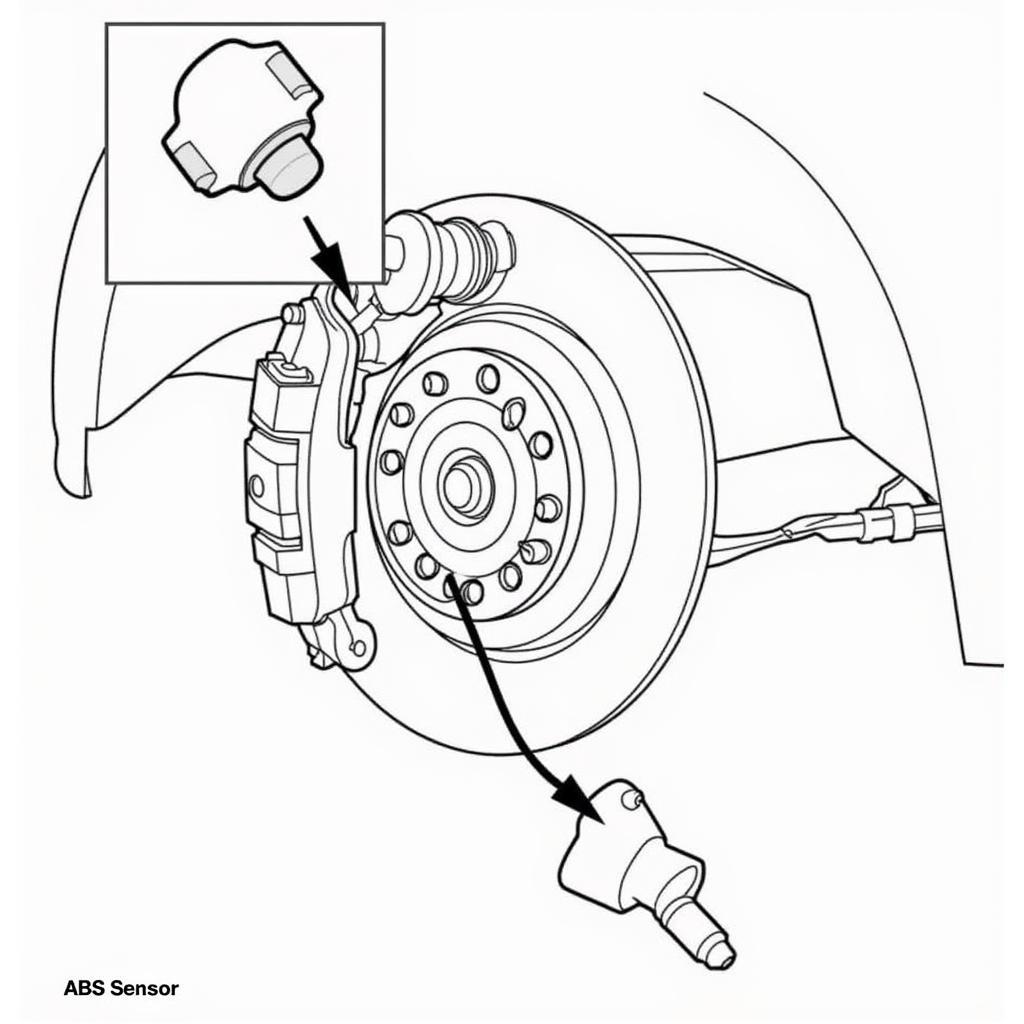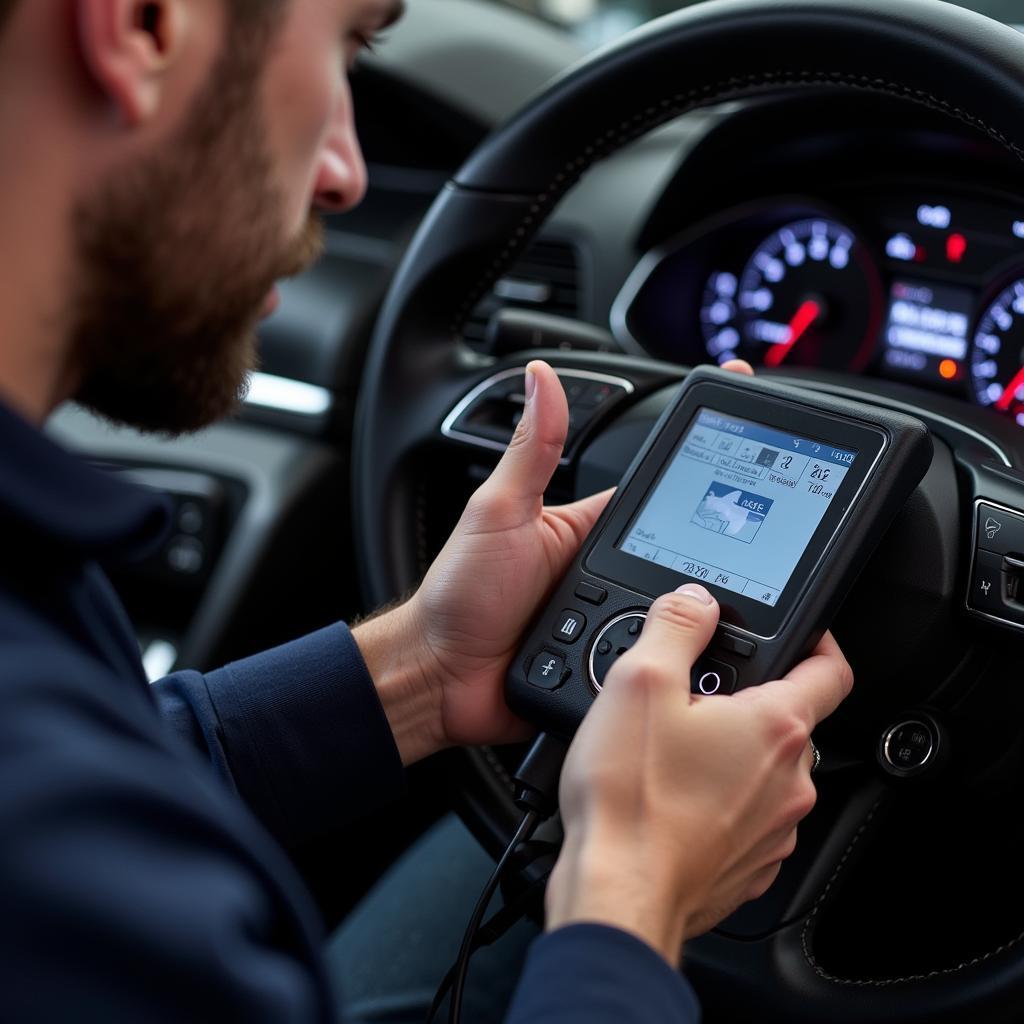The brake warning light on your 2008 Nissan Altima is a crucial safety feature designed to alert you to potential issues within your braking system. While it can be alarming to see this light illuminated on your dashboard, understanding the common causes and knowing how to troubleshoot the problem can help you address the issue promptly and safely.
This comprehensive guide will delve into the various reasons why your 2008 Nissan Altima’s brake warning light might be on and provide step-by-step solutions to help you get back on the road with confidence.
Common Causes of a 2008 Nissan Altima Brake Warning Light
The brake warning light in your Altima can be triggered by several factors, ranging from minor issues to more serious problems. Here are some of the most common culprits:
1. Low Brake Fluid Level
One of the most frequent reasons for the brake warning light to illuminate is low brake fluid. Brake fluid is the lifeblood of your braking system, transmitting the force from your foot on the brake pedal to the brake calipers, which then squeeze the brake pads against the rotors to slow or stop your car.
Over time, brake fluid levels can naturally decrease as your brake pads wear down. However, a sudden drop in brake fluid level could indicate a leak, which requires immediate attention.
2. Worn Brake Pads
Another common cause of the brake warning light is worn brake pads. Most 2008 Nissan Altimas are equipped with a wear indicator, a small metal tab attached to the brake pad. When the brake pad material wears down to a certain level, the wear indicator comes into contact with the brake rotor, creating a high-pitched squealing sound and triggering the brake warning light.
3. Faulty Brake Light Switch
The brake light switch, located above the brake pedal, is responsible for activating your brake lights when you press the brake pedal. A malfunctioning brake light switch can disrupt the signal sent to the brake warning light system, causing it to illuminate even if there’s no issue with your brakes.
4. ABS System Malfunction
Your 2008 Nissan Altima is equipped with an Anti-lock Braking System (ABS), designed to prevent wheel lockup during hard braking, maintaining steering control. If the ABS system encounters a malfunction, such as a faulty sensor or control module, the brake warning light may illuminate.
 2008 Nissan Altima ABS Sensor Location
2008 Nissan Altima ABS Sensor Location
Troubleshooting the Brake Warning Light on your 2008 Nissan Altima
Before attempting any repairs, it’s essential to diagnose the problem correctly. Here’s a step-by-step guide:
-
Check the Brake Fluid Level: Park your Altima on a level surface and open the hood. Locate the brake fluid reservoir (refer to your owner’s manual if necessary) and check the fluid level. If it’s below the “MIN” mark, add the recommended brake fluid type (DOT 3 or DOT 4) until it reaches the “MAX” line.
-
Inspect the Brake Pads: If the brake fluid level is normal, visually inspect your brake pads through the wheel spokes. If you notice the brake pad material is significantly worn or the wear indicator is making contact with the rotor, it’s time to replace your brake pads.
-
Test the Brake Light Switch: With the engine off, press and release the brake pedal several times while observing the brake lights. If the brake lights don’t illuminate or remain on, the brake light switch may be faulty and needs replacement.
-
Seek Professional Diagnostics: If the previous steps haven’t resolved the issue and the brake warning light remains illuminated, it’s best to seek professional diagnosis. Modern vehicles like your 2008 Nissan Altima have complex electronic systems, and a qualified mechanic can use specialized diagnostic tools to pinpoint the exact problem within the ABS system or other brake components.
When to Seek Immediate Attention
While a glowing brake warning light doesn’t always signify an immediate emergency, there are instances when you should seek immediate attention:
- Soft or Spongy Brake Pedal: If you experience a soft or spongy brake pedal feel, it could indicate a serious issue with your braking system, such as air in the brake lines or a brake fluid leak.
- Grinding Noise When Braking: A grinding noise while braking typically indicates that your brake pads are completely worn down, and the metal backing plate is making contact with the rotor. This requires immediate attention to prevent further damage to the braking system.
- Pulling to One Side When Braking: If your Altima pulls to one side when braking, it could be a sign of uneven brake pad wear, a stuck caliper, or a brake hose issue.
Conclusion
Addressing the brake warning light on your 2008 Nissan Altima promptly is crucial for ensuring your safety and the longevity of your vehicle. By understanding the common causes and following the troubleshooting steps outlined in this guide, you can effectively diagnose and address the problem.
Remember, if you’re unsure about any aspect of brake repair or diagnosis, it’s always best to consult a qualified mechanic to ensure your safety and the proper functioning of your braking system.
FAQs:
-
Can I drive my 2008 Nissan Altima with the brake warning light on?
While it’s technically possible to drive a short distance with the brake warning light on, it’s not recommended. Driving with a potential brake problem puts you and other drivers at risk. -
How often should I check my brake fluid level?
It’s a good practice to check your brake fluid level at least once a month, along with your other fluid levels. -
How much does it cost to replace brake pads on a 2008 Nissan Altima?
The cost of brake pad replacement can vary depending on factors like location, labor rates, and the type of brake pads used. On average, you can expect to pay between $150 and $300 for both front and rear brake pad replacements. -
How long can I drive on my brake pads after the warning light comes on?
Once the brake warning light comes on, it’s crucial to have your brake pads inspected as soon as possible. The remaining lifespan of your brake pads can vary, but driving with worn-out pads can damage your rotors and lead to more costly repairs. -
Why is my brake warning light flashing?
A flashing brake warning light often indicates a problem with your ABS system. It’s essential to have your vehicle diagnosed by a qualified mechanic to pinpoint the specific ABS issue.

